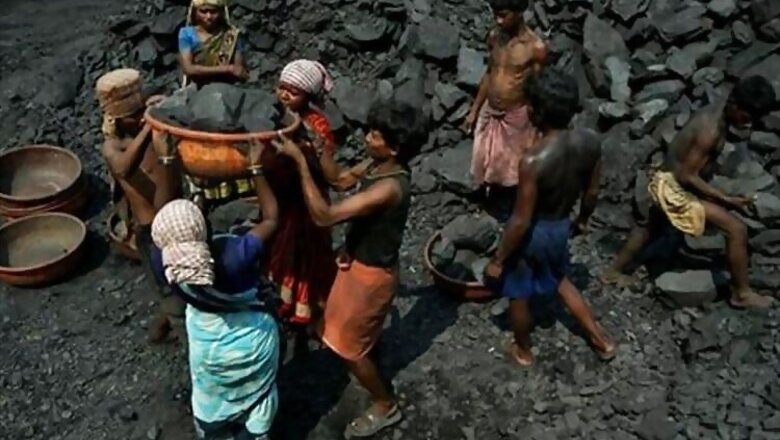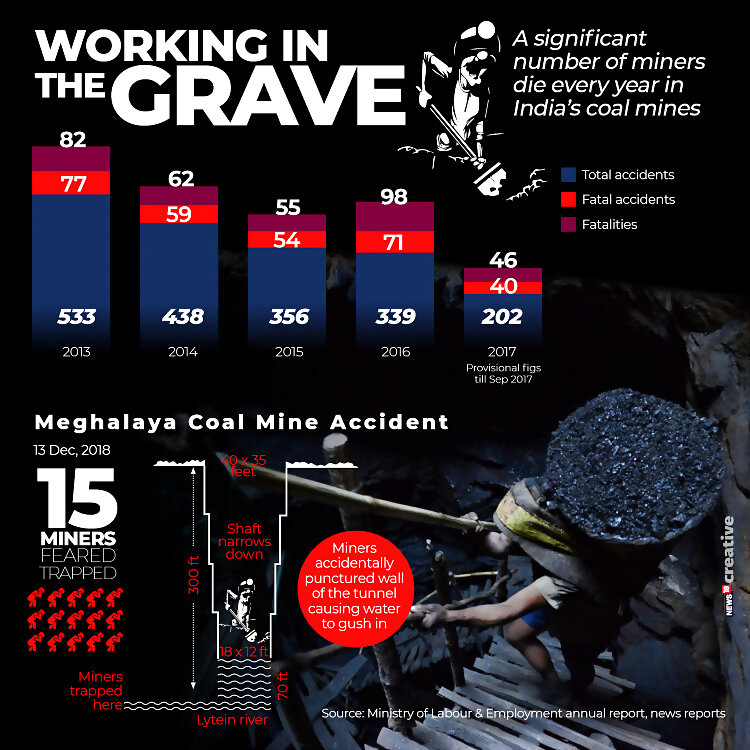
views
New Delhi: Thirty-three days after 15 miners were trapped inside a 'rat-hole' coal mine in Meghalaya, Navy divers found a body of one of the miners on Wednesday. Others are also feared dead as the multi-agency rescue operation, which began only on the 16th day of the incident, continues.
The unfortunate incident happened on December 13 2018 when a group of miners went inside the mine in Lumthari village in East Jaintia Hills of Meghalaya. Barring a few, the rest were left trapped inside the narrow mines as water from the nearby Lytein river reportedly spurted inside the mine.
The incident, however, is not a one-off.
News18 has compiled data from the Ministry of Labour and Employment and news reports, which reflect that at least 1,666 coal mine accidents happened across the country between 2013 and 2016. Among these, as many as 261 were fatal accidents causing at least 297 deaths in total.
Provisional data available for the year 2017 (till September) shows 40 fatal coal mine accidents out of a total of 202 incidents. Forty-six miners lost their lives in these accidents.

Meghalaya remains a major spot for coal mine tragedies, mainly due to rampant 'rat-hole' mining wherein narrow tunnels are dug up to extract coal. Accidents such as cave-ins are common in these mines.
Considering the dangers involved in the process, the National Green Tribunal (NGT) had banned 'rat hole' coal mines in 2014, labelling them unscientific, and unsafe for workers. The ban was upheld again in 2015. Some 5000 rat-hole mines continue to operate in Meghalaya, despite the ban.
Workers involved in 'rat-hole' mining, the majority of whom are children, are generally lured into this work due to relatively high wages, despite knowing the dangers of the process.
According to a 2010 study done by Impulse NGO Network, a non profit working to address issue of unsafe migration and human trafficking, in Meghalaya, mining would fetch the labourers around Rs 8,000 to 10,000 a month, a figure considerably more than ordinary wages given to labourers. With time, wages have gone up to Rs 1,000 per day in recent years, considering the NGT ban.
Child labour is another aspect of the illegal mining industry in Meghalaya. A majority of the workers involved in 'rat-hole' mining are children who are either migrants or trafficked from neighbouring countries such as Nepal and Bangladesh. Children are suited for this job because of their small anatomy that fits small mine tunnels.
Most of these children are between the age group of 13-17, reads the study. The report further suggests that, out of the sample of 200 children interviewed by the NGO, almost 63 percent were aware of the dangers involved in mining but did it because of the money it offers.
So, while the recent tragedy in Meghalaya draws our attention to the phenomenon of illegal mining and how people are risking their lives to earn a living, its part of a long trend of mine accidents in the country where miners die almost every year.


















Comments
0 comment